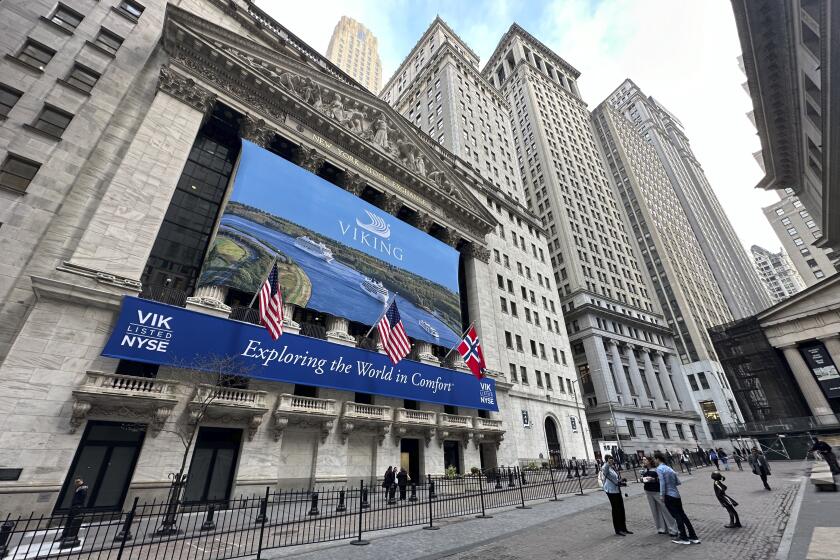Consumer prices fall in August
Consumer prices posted a rare decline in August while the battered housing industry saw construction fall to the slowest pace in 12 years.
The new economic reports Wednesday were seen as justification for the Federal Reserve’s bolder-than-expected cut in interest rates to try to ward off a recession.
Analysts said the fading inflation pressures gave the Fed the room to cut interest rates while the continued severe downturn in housing gave the central bank a reason to move.
The Labor Department reported that consumer prices fell by 0.1% in August. It was the first decline since a 0.4% drop in October 2006 and reflected a big decrease in gasoline and other energy prices.
Meanwhile, the Commerce Department reported that construction of new homes fell by 2.6% last month to a seasonally adjusted annual rate of 1.331 million units. That was the slowest pace since June 1995 and put construction activity 19.1% below the level of a year ago.
The Fed on Tuesday cut its target for the federal funds rate -- which governs the rates paid on millions of consumer and business loans -- by half a point to 4.75%, double the quarter-point reduction that had been expected.
The Fed in its statement said that “some inflation risks remain,” but by making the bolder half-point cut in its federal funds rate it was signaling that it clearly believed the threat of a recession outweighed concerns about inflation.
Analysts predicted that housing construction would fall further in coming months, reflecting the recent turmoil in financial markets as investors lost their appetite for securities backed by mortgages because of rising mortgage delinquencies.
“There is a continuing major down-slide,” said David Seiders, chief economist for the National Assn. of Home Builders. “We know from our own surveys that August was a really rough month in the mortgage market and the housing market.”
The organization’s survey of builder sentiment fell to 20, tying a record low set in January 1991 during the last severe housing downturn.
Seiders said even with the Fed’s cut in interest rates, he did not expect to see new-home sales stop falling until early next year, with construction starts not stabilizing until the middle of next year.
The problem, he said, was that the rising mortgage foreclosures are dumping more homes on an already glutted market at a time when potential buyers are having difficulty getting mortgages because lenders are tightening standards.
Mortgage foreclosures are expected to rise even further as an estimated 2 million adjustable-rate mortgages with low teaser rates reset to much higher monthly payments over the next two years.
The decline in housing construction in August reflected big drops in the Northeast, where building activity fell by 37.7%, and the West, where it was down 18.4%. Construction rose by 11.4% in the South and 4.2% in the Midwest.
Applications for building permits, considered a good sign of future activity, fell 5.9% to an annual rate of 1.307 million units, signaling more weakness in coming months.
The inflation report showed that core inflation, which excludes food and energy, remained well contained in August, edging up by 0.2% as clothing prices fell for the fifth month out of the last six. However, medical costs and airline ticket prices both showed big increases.
The 0.1% fall in overall prices reflected a hefty 3.2% drop in energy costs. It was the third straight decline in energy and the biggest drop since last October. The price of gasoline fell by 4.9% -- an improvement that is expected to be reversed in coming months, given that oil prices this week hit record highs above $80 a barrel.
Food costs posted another big increase in August, rising by 0.4%, as higher costs for dairy products and fruit offset prices declines for vegetables and pork. So far this year, food prices have been rising at an annual rate of 5.6% -- far above a 2.1% increase for all of 2006.
The cost acceleration has been blamed in part on increased demand for ethanol, which has driven up prices for corn and other agricultural products.
Overall inflation through August rose at an annual rate of 3.7%, up from a 2.5% increase for all of 2006; energy and food are being blamed for much of the acceleration.
Core inflation, which the Fed closely monitors, is better behaved this year, rising at an annual rate of 2.3% through August -- down from an increase of 2.6% for all of 2006.






